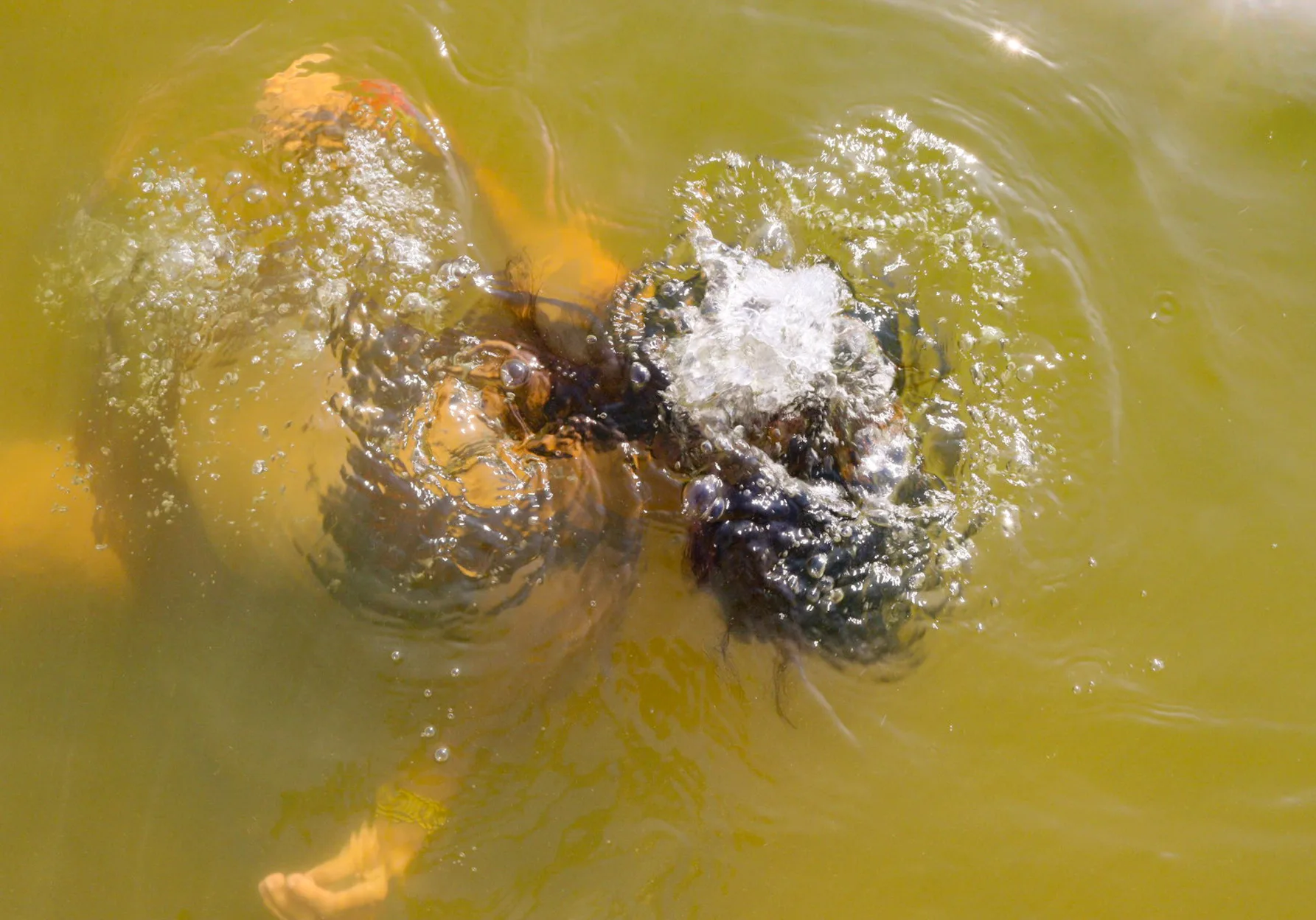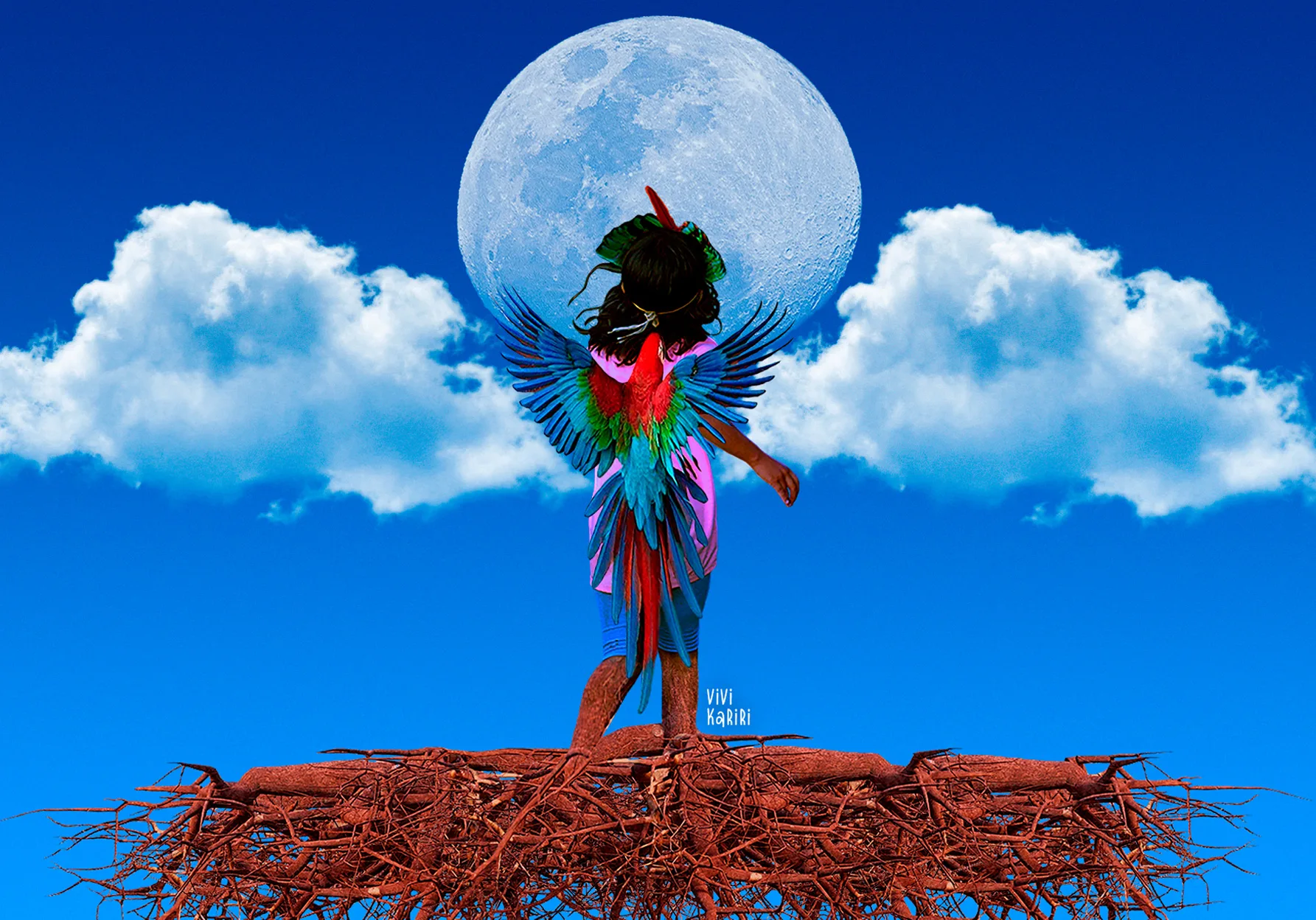The small motorboat draws near the banks of the Beni River. Careful footing is needed when stepping on ground made slippery by recent rains. Then a trail leads to the center of Carmen Florida, a Takana village inside the Biosfera Pilón Lajas Reserve, in the Bolivian Amazon, where a large swath of green grass is surrounded by houses. The clouds are a hopeful sign for a community that six months earlier was besieged by fires in the surrounding forest. During the weeks when the fire drew close, water and food ran short. Children suffered from smoke inhalation. The school closed. Now the path is green and gardens are showing signs of revival, but crops are still suffering from a drought that has yet to fully retreat. Another effect of the climate crisis.
Little is understood here about weather that used to be more predictable. Although there is no rain today, Carmen Florida has twice had to rebuild on higher ground in the territory because of flooding. The Beni River is murkier, residents say, contaminated by the remnants of a mining projects located a few hours away. There is machinery in the forest nearby: the ghost of another government pipe dream, the construction of two massive hydroelectric dams, Chepete and El Bala, which could leave many villages – not to mention all of their history – underwater. For now, the Bolivian government’s plans are at a standstill, following intense pressure from society, including in Carmen Florida; but the government has not officially retreated and the apparatus used to study the projects remains in the forest, haunting the Indigenous people.
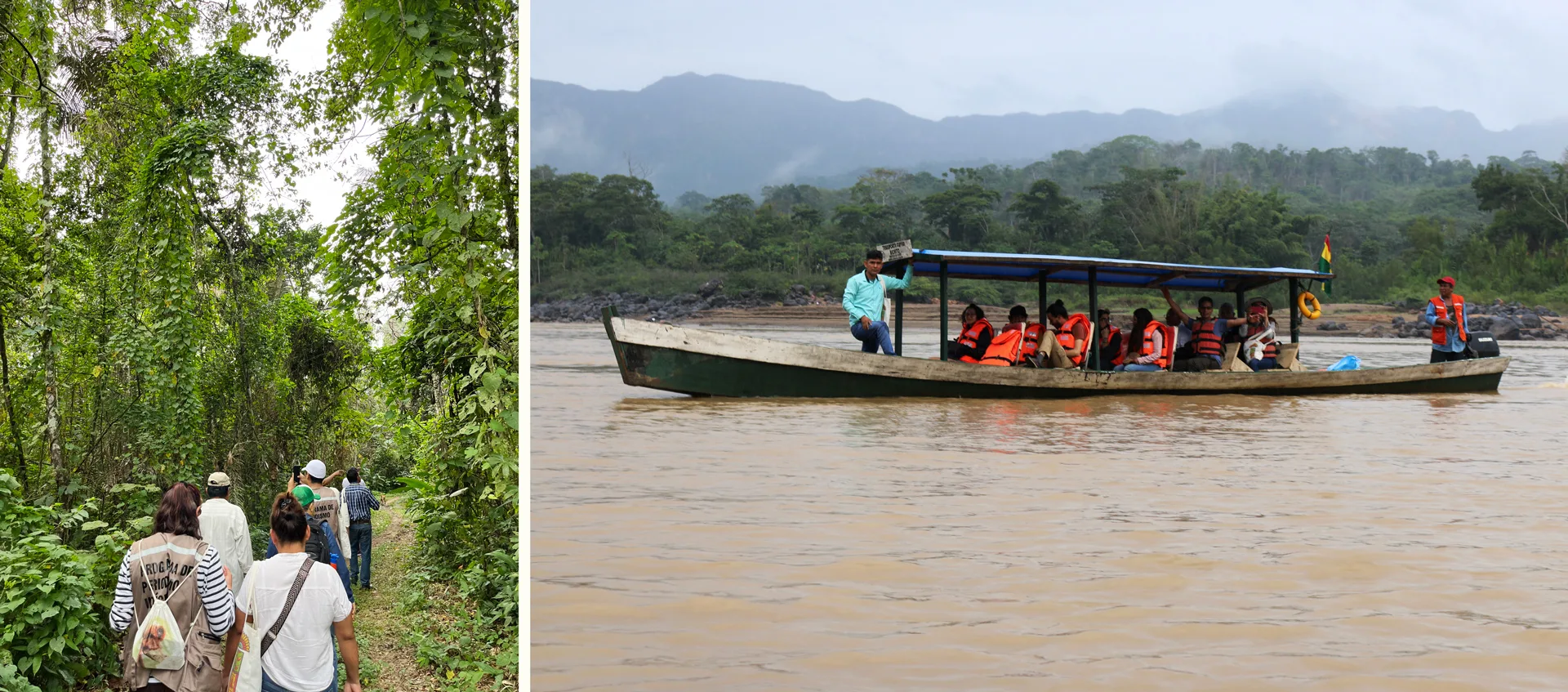
The village of Carmen Florida, in the Bolivian Amazon (left), and (right) the Beni River, in slow recovery from an extreme drought. Photos: Fospa
Not far away, in the Bolivian province of Cordillera, history is repeated. “We have mining companies bearing down on us, oil companies bearing down. We’re fighting against a complex of eight dams and now it’s lithium mining [driven by demand for electric cars],” says Lourdes Miranda, of the Guarani nation. In Colombia, the mining companies badger residents among the Kamëntšá Biÿá while they contaminate the river, which is also the case in Suriname. Oil is the terror of the Waorani and the Sarayaku of Ecuador. And any one of these situations could describe the distress various peoples in Brazil are feeling.
In Pan-Amazonia, a group of nine countries that hold parts of the world’s largest rainforest, the pains of the diverse residents are many and similar. With each passing year they see and sense record temperatures, droughts causing more fires, and floods invading their communities. And they know many of the causes of this collapse are there, in the destruction wrought by mining, oil drilling, and major government works carried out in their territories – all of which also affects their bodies. Yet there is still strong resistance by those who know how to live like the forest.
And that is why they must be heard.
The center of Rurrenabaque, the municipality containing Carmen Florida, is a little over thirty minutes away by boat. The city of few streets is the gateway to Madidi National Park, one of the world’s most biodiverse areas that, prior to the pandemic, used to bring in tourists from far and wide. Over four days in June, 1,500 Indigenous people, Quilombolas, Ribeirinhos, activists, and academics gathered there for the Pan-Amazonian Social Forum (Fospa) to discuss a plan to save the world from climate collapse. Based on their personal experiences and their relationships with Nature, they came with proposals to cope with the failure of the United Nations Conference of the Parties, also known as the COP climate change meetings – 28 have already been held to discuss climate, in addition to 15 more dealing with biodiversity. Yet to this day, the results of these meetings between countries whose interests are oftentimes in opposition and which place their economies over the climate and our planet-home’s survival has fallen far short of what the world needs at this time.
“The Amazon has reached the point of no return and is in a climate emergency. The climate collapse resulting from deforestation and extractivism threatens its survival and that of the communities that inhabit it and puts the life of the entire planet at risk,” reads the final Fospa declaration. “Given the failure of the climate negotiations, we call for building an agreement for life, to confront climate and ecological collapse (…) The countries responsible for global warming must assume their ecological debt for the regeneration of the Amazon and the Pan-Amazonian countries must transition to a social paradigm of Good Living.”
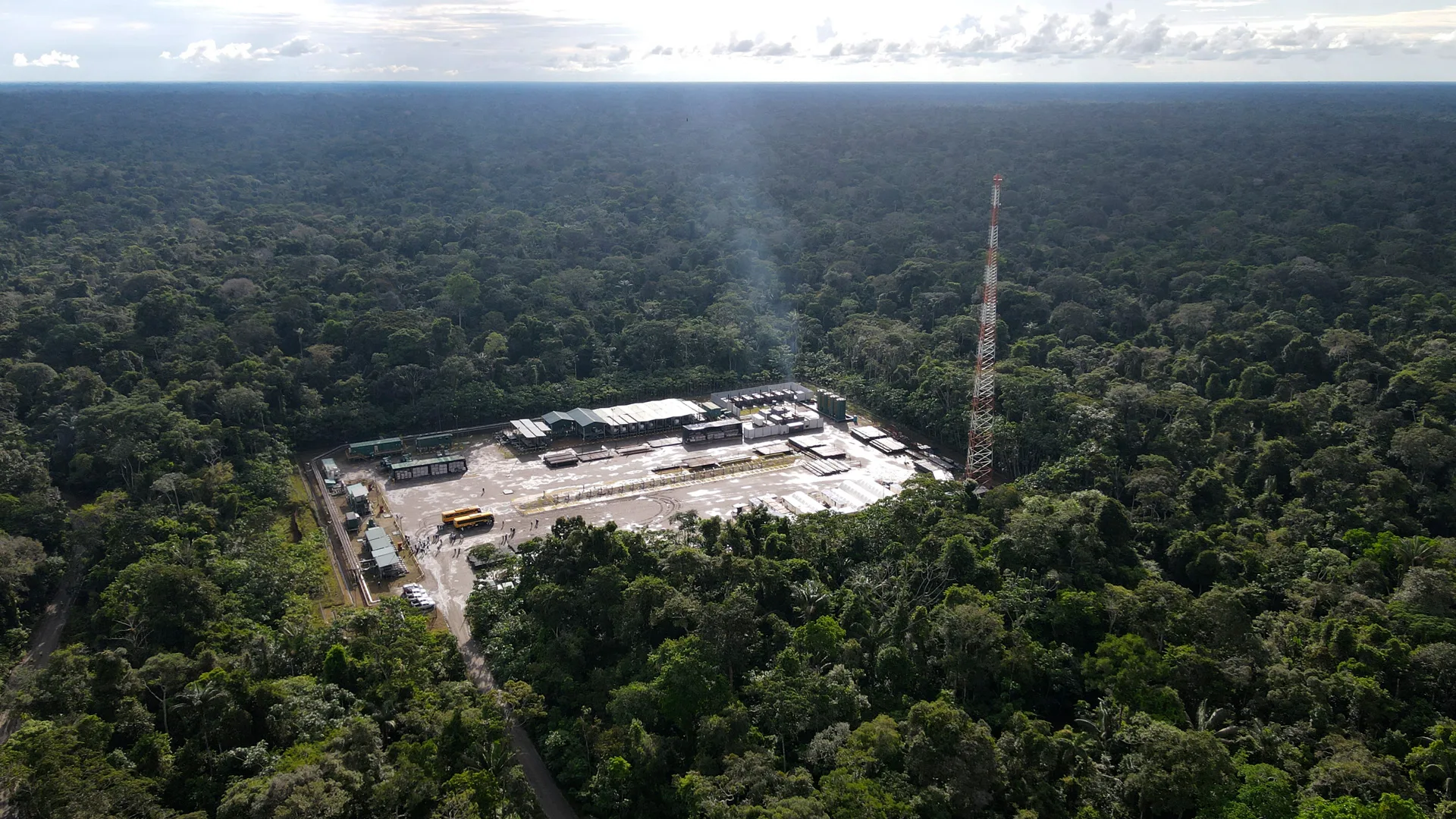
At Yasuni National Park, in Ecuador, the community won its battle against fossil fuels and is now fighting to force the steel body out of the forest. Photo: Rodrigo Buendia/AFP
The forest peoples know the answer
Good Living, a concept inspired by the cosmovisions of the Aymara (suma qamaña) and Quechua (sumak kawsay), but which finds parallels in various Indigenous peoples, is the horizon. “[Suma qamaña and sumak kawsay] express a set of ideas centered in the systems of knowledge, practice and organisation of the native peoples of the Andes,” explains Bolivian Pablo Solón, one of Fospa’s organizers, in the book Systemic Alternatives, published by Editora Elefante, in 2019. “For [Good Living], the ‘whole’ is the Pacha. This Andean concept has often been translated simply as Earth. That is why we speak of Pachamama as Mother Earth,” he writes. “In the Pacha, there is no separation between living beings and inert bodies, all have life. Life can only explained by the relation between all the parts of the whole […] All are part of nature and the Pacha as an entirety has life.”
“In our cosmovision, Mother Earth is our Mother. The territory is part of Mother Earth it’s sacred,” says Maria Concepción Juajibioy Jacanamejoy, who goes by Conchita, a Kamëntšá Biÿá woman who lives in the Ancestral Territory of the Sibundoy Valley, in Putumayo, Colombia. “We have a way of understanding the world that comes from Good Living, because we are reciprocal with Nature. We are co-responsible. Each son and daughter of our people is a child of Mother Earth. On her we live, on her we develop, and to her we return,” Conchita says.
In the forest peoples’ cosmovisions, human beings are just as important as all the other beings. And that is why maintaining life is no longer feasible when Mother Earth is constantly violated – along with all of her more-than-human children – so more and more raw materials can be extracted for an unsustainable world. “We people need to consolidate territories free of oil drilling, mining, deforestation, agribusiness, pollution, false solutions [to the climate crisis], free trade, militarization, and violence,” reiterates the letter from the peoples. “The capitalist system needs to be changed and not the climate, building structural alternatives, inclusive and participatory governance at the local, national, and international level.”
Among the proposals submitted are to work to recognize all of the traditional territories – which have been shown to have less deforestation; to consider the Amazon and its rivers as subjects of rights; to declare the forest a no-go zone for all forms of extractivism and a zone free of fossil fuels; to promote traditional and family farming practices without the use of agrochemicals or transgenic seeds, as well as small-scale livestock farming; to prohibit the export and import of products that deforest and eliminate subsidies and financing for extractivist activities; to promote local tourism; to reject the energy transition proposed by the global North, where electric cars and solar panels intensify the mining of minerals like lithium; and to focus on autonomous energy sovereignty in the territories, which should be decentralized – the communities need to have their own independent systems.
The declaration comes from their pains, but it is inspired by the hope that struggle brings. Palos Blancos and Alto Beni, in the Bolivian Amazon, are successful examples of how the people’s strength can transform the forest’s destiny. These two municipalities achieved a legal declaration as mining-free territories. Both became agroecological cities, using ancestral and environmentally friendly production systems, free of agrochemicals, for example. “The whole river was split into squares,” one of the representatives from Palos Blancos explains at the roundtable kicking off the Fospa, talking about how the river was divided by the federal government to provide areas for mining projects. “Yet our waters will not be contaminated,” he says. With this, citizens are also able to stop the advance of gold prospecting.
In Peru, Kukama Kukamiria women have created an association to defend the Marañón River and their ancestral territory. “Fighting for the river means fighting for our own life,” says Mari Luz Canaquiri, one of the organization’s representatives. “Our rivers in Peru are completely contaminated by mining. But we still have time to save them. We use to have lots of fish, plenty of food. Today we don’t. This affects the economy, health, Good Living.”
In May of this year, the Marañón River, which starts in Peru and flows out into the Amazon River, in Brazil, became a subject of rights, gaining a legal standing that can stop projects that affect it. The women’s association has already received three favorable rulings from the courts to protect their territory. The most recent, rendered in June, stopped the advancement of the Amazon Waterway project, which would have impacted 2,687 kilometers along the Huallaga, Marañón, Ucayali, and Amazon Rivers. This fight is similar to one waged in the municipality of Guajará-Mirim, Rondônia – there the Laje River, penned in by agribusiness, has also become a subject of rights. The movement is inspiring the Guardiões do Bem Viver group to push for the rights of the Arapiuns River, in western Pará.
In Colombia, which will host the next COP on Biodiversity this November, various rivers are already subjects of rights, as is the Amazonian biome itself. In Ecuador, the Waorani successfully petitioned the courts in 2019 to block the opening of an oil exploration block in Yasuní National Park, which helped the country’s people say no to oil drilling in the region in a referendum in August 2023 – a movement that was also repeated in an area of the forest near Quito. The Yasuní’s fight was so symbolic it became a verb: “The Amazon needs to be Yasunized,” the Fospa’s attendees call out.
“What can we do to postpone the world’s end?” asked a young woman from the Chico Mendes Extractivist Reserve, in Acre, in the Brazilian Amazon, who took the microphone during the first day of the meeting. The answer, the peoples in the fight point out, is in the forest.
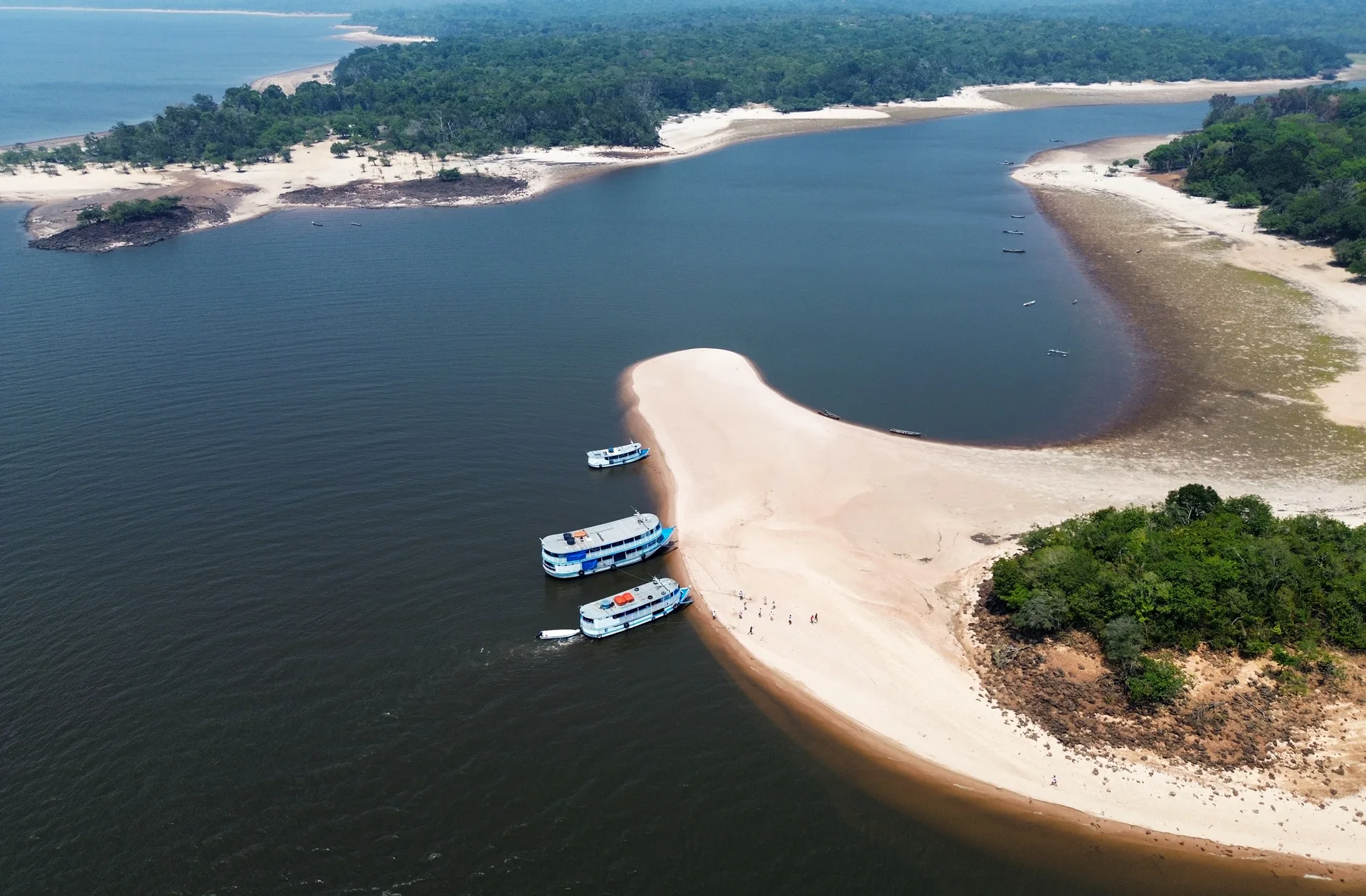
The Arapiuns River, in the state of Pará, in the Brazilian Amazon, is fighting to also become a subject of rights. Photo: Guardiões do Bem Viver
Journalist Talita Bedinelli traveled to Rurrenabaque at the invitation of Fundación Solón
Report and text: Talita Bedinelli
Editing: Eliane Brum
Photo Editor: Lela Beltrão
Fact-checker: Plínio Lopes
Proofreader (Portuguese): Valquíria Della Pozza
Spanish translation: Julieta Sueldo Boedo
English translation: Sarah J. Johnson
Infographic: Ariel Tonglet
Copyediting and finishing: Natália Chagas
Editorial workflow: Viviane Zandonadi
News editor: Malu Delgado
Editor-in-chief: Talita Bedinelli
Editorial director: Eliane Brum

